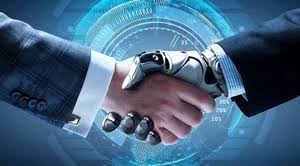Usually, the subjects that we associate with creativity are those of art, music, fashion, or similar. However, given that creativity is at the core of human intelligence almost every human vocation and activity has always been and always will be a platform for creative exploration. The topic of creativity has been of interest to philosophers, aestheticians, psychologists, and those working in the field of computation. However, there is generally a dearth of clarity regarding the nature of creativity. In fact, many thinkers argue that it may not be possible to explain creativity as a naturalistic phenomenon.
“Plato argued that inspiration is a kind of madness and Kant linked creativity to the imagination; both accounts were powerfully influential on Romanticism and thereby on popular conceptions of creativity.”
Berys Gaut
Despite this ambiguity, there seems to be a general agreement that creativity involves the ability to generate new ideas.
“Creativity can be defined as the ability to generate novel, and valuable, ideas.”
Margaret Boden
An idea may be novel to the person who came up with it, in which case other people might have had this idea before or it may be novel to the world, in which case the person coming up with the idea is the first to do so and the idea is objectively novel.
Margaret Boden divides creativity into three types: combinational, exploratory, and transformational. Combinational creativity involves the formation of novel ideas by combining previous familiar ideas. A programmer putting together a new application using existing software packages may be described as demonstrating combinational creativity. Exploratory creativity involves finding novel ideas by searching in a space that is constrained by certain rules. An example of such creativity could be that of astrophysicists who explore the universe for undiscovered phenomena but whose discoveries are bound by the laws of physics. Finally, transformational creativity is a non-conformist flavour of creativity in which alterations are made to previous ideas as well as rules so that one is left in awe or bewilderment at the final product. Thus, transformational creativity is a result of changing the rules of the game.
For many years, researchers have attempted to recreate creativity through computation. Computational creativity is a field of AI which attempts to reproduce the three types of creativity described above through computational processes.
Creativity in AI
The formal definition of computational creativity has changed many times over the past decades. Computational creativity is a research field that already exists for many years now. However, the true definition of it is not yet found. The definition used around 2012 is one that states the basics very well.
“Computational Creativity is the study and simulation, by computational means, of behaviour, natural and artificial, which would, if observed in humans, be deemed creative”
Colton and Wiggins (2012)
Nevertheless, this definition was dropped as the official definition. The reason for this was the fact that it suggests that it is aiming for computers to have a human-like appearance. So there had to be a more specifically divined definition, which is stated below.
“Computational creativity is a multidisciplinary endeavour that is located at the intersection of the fields of artificial intelligence, cognitive psychology, philosophy and the arts. The goal of computational creativity is to model, simulate or replicate creativity using a computer, to achieve one of several ends:
1. to construct a program or computer capable of human-level creativity
2. to better understand human creativity and to formulate an algorithmic perspective on creative behaviour in humans.
3. to design programs that can enhance human creativity without necessarily being creative themselves”
The International Association for Computational Creativity
This simply means that they made the field more approachable with straightforward goals for now. This is among other things because of the fact that even human creativity varies greatly. Or to say in other words, creativity for humans is a profoundly philosophical matter.
People might argue that the creative endeavours of machines are not really creative, because they are not original. Machines make use of algorithms and some of those will be shortly explained further in this article. It is because of these algorithms, that are created by humans, that people say that the machine itself is not really creative. They might also argue that in fact the engineer who created the machine and wrote the algorithm, is the one that is the artist. Because they created something that ensured the creativity of the machine. However, the well-known scientist Alan Turing created the Turing test. This test consists of a human, a machine and an interrogator. All three are separated, and the goal of the interrogator is to identify which player is human and which is the machine. The machines goal is to be identified as a human, because then it is proven to act human-like. This Turing test was passed for the first time in 2014, so it is possible for machines to act human-like nowadays, which means that it might also be possible on a creative level.
“A computer would deserve to be called intelligent if it could deceive a human into believing that it was human.”
Alan Turing
Ada Lovelace stated that a machine has to be able to create original ideas if it is to be considered intelligent. And it is argued that only humans perform original actions and create original objects and therefore, machines cannot be intelligent. This whole statement seems to be unfounded and poorly expressed. What these people mean is most likely related to the thought that machines cannot be as intelligent or creative as humans. Turing, therefore, provided us with the originality argument, to refute this argument of machines not being able to reach human potential.
“The Analytical Engine has no pretensions to originate anything. It can do whatever we know how to order it to perform.”
Ada Lovelace, 1842
This originality argument is based on the fact that machines and AI in particular, frequently take their designer by surprise. This can however be seen as something similar to originality. Because it creates something their designer did not expect it to create. And this does not have to be something super creative, but the fact that it creates something unexpected means we can call it creative.
Another argument that people use is that machines never create anything new, they just recreated and combine things that they have “seen” before. But is that not exactly what we as humans do too? Do we not also look at other artists or scientists before we start working on our own process. This can just be seen as creative exploration or even the evolution of learning to be creative. And if there is one thing that machines can do nowadays, it is learning. By using evolutionary algorithms the human process of learning certain arts can be recreated. This process of evolution will be accelerated immensely, because of the learning rate of AIs. So in a way, the role of AI is a kind of catalyst to push our human creativity. It can learn creativity faster, and humans can use that as a way to push their own creativity. We will explain the use of evolutionary algorithms in more depth further on in this article.
Creative AI in art
Art is a broad field consisting of numerous disciplines. Given the range of disciplines to pick from, we chose to focus on painting as it is widely considered one of the principal disciplines within art.
Below we can see a picture of a robot painting a painting. This Painting is created by Pindar van Arman, who is an award-winning AI artist. The robot arm that can be seen is part of the Cloud Painter project. In this project, Arman used computational creativity to mimic his own creative decision process by teaching the AI every step of it.

van Arman is active on a platform called, AI Artists and has created many paintings by leveraging AI over the years. Additionally, he has experimented with many different models of creative AI. Examples of these are CNNs that can transfer a certain artists style onto another painting or picture and Generative Adversarial Networks(GANs), to create paintings out of nothing. Both of these methods are very impressive. And while most people would agree that the last method is creative, there is a lot of controversy around the style transferring algorithms. Arguments against this method are that only transferring someone else’s creative style is not creative. Even if it generates a whole new image. However, this does not immediately have to mean that the artwork is not creative. The whole reason people like to look at art is that they feel like they can relate to it or it portrays some sort of emotion that they relate to. And why should AI not be capable of stirring such emotions in people? AI might not know and understand emotions. However, that does not mean that humans cannot get emotional from looking at it. If AI creates an image of a sad little boy, it does not understand that the boy is sad neither does it know the feeling of sadness. Nevertheless, we can still connect the emotion to the image and therefore experience a similar feeling to art that is produced by humans.

On the AI Artist platform, there are many different artists that all use AI in their art and most of them have a unique approach of using AI. All artists have their own creative process and their own way of augmenting their creativity with AI.
Creative AI in science
The biggest contribution that AI may make to human society is in giving us superpowers in innovation. In fact, AI is already beginning to show a lot of promise in this particular space.
AI’s chief legacy might not be driverless cars or image search or even Alexa’s ability to take orders, but its ability to come up with new ideas to fuel innovation itself.
David Rotman
In science, new discoveries come about by exploring domains which are constrained by certain immutable laws such as the laws of physics for instance. However, the problem is that these domains are very large and human researchers are barely able to scratch the surface of possible discoveries. AI can support human innovation in such instances as it is notoriously good at exploring possibilities given a set of heuristics for searching the space.
Drug discovery is one such field where AI is lending a helping hand. Until now, chemists were required to experiment by synthesizing compounds which may provide medicinal benefits. The compounds to synthesize were historically chosen by these researchers based on their own expertise. Many of these experiments turn out to be failures and numerous iterations are required in order to find success. As one might guess, the domain of exploration, in this case, is quite large given the number of possible compounds that can be synthesized from known elements. AI-based tools may be able to speed up this process and make drug discovery much quicker.

Atomwise, an AI-based tool, attempts to solve the challenges faced in the first steps of drug discovery. It does so by identifying molecules with desirable properties by using neural networks to comb through a large database of molecules which bind to targeted proteins.
Researchers in material discovery faces challenges similar to those working in drug discovery. AI tools are being developed to assist researchers in this field as well. One such tool, Material.ai uses machine learning to emulate the properties of new materials by learning how existing materials interact with each other. By doing so, Material.ai hopes to speed up the process of material discovery as well as make innovation in this field more affordable.
Creative AI in music
Music composed by AIVA, which stands for Artificial Intelligence Virtual Artist. This is an algorithm that has trained itself to compose music that humans want to listen to. They have eleven preset algorithms with each a different style, but for people that want to compose music together with AI there is another option, which they call, “compose with influence”. This is a great example of how AI can support humans in making music. When an artist experiences a “writer’s block”, they can simply use a software like this, which is not too complicated for the average user, and start exploring until they come up with something they like. Pierre Barreau, the creator of AIVA, let it compose a piece that would be in the theme of a science-fiction film soundtrack called, “Among the Stars”. This piece was later played by an orchestra.
“AI can create beautiful pieces of music, and the best part of it is that humans can actually bring them to life.”
Pierre Barreau
Algorithms like AIVA make use of evolutionary algorithms and fitness functions. They start with an initial population of musical expressions and a basic algorithm that will mimic reproduction and add random mutations. For every new generation that arises, natural selection is applied through a fitness function. Here is where human representation comes in. Humans choose the melodies that they like best. This information is collected and the ultimate melody is selected. Now the melodies created by the algorithm are compared to the ultimate melody. This process is then repeated many times. Until the algorithm can produce beautiful music that humans cannot distinguish from music made by humans. Therefore, it is quite likely that these algorithms pass the Turing test.

Another great accomplishment in computational creativity is bringing deceased composers like Beethoven, back to life. This means that music can be created in a way that Beethoven would have done it. Some people argue that this is not creativity, but simply imitating and reproducing. And despite this being true. If a human would have been able to recreate music in the exact same way, we would have said that this person is very talented and creative. Because even though it is someone else’s style, this human created a new musical composition. However, when an AI does the same thing, people do not see this as creative anymore.
Let AI help us to unleash our full potential
Now you know more about what creativity is exactly and how computational creativity works. Are you convinced that it can help you? We hope you do, because there is so much potential out there to be creative, with or without AI. People that are not very creative are now able to establish creative things easier, because of the help of AI. And creative people might not feel like they need it, but then again there is always room for improvement and learning. So when these people try using AI they might be pleasantly surprised. And for the people that are really convinced that AI cannot and will not be creative ever. This is still a valid opinion, because creativity is subjective and something that has to be interpreted by humans. When a human does not interpret something as creative, they will also not accept it as creativity. However, when something is considered to be creative when a human performs is, should in our opinion also be considered creative when created by a machine. Otherwise, it means that we set the bar for creativity higher for machines than for humans, which also means we expect more from machines creatively. And by expecting more of them we would consider them more creative as we are. Since creativity is a property of intelligence, we also already consider AI more intelligent than humans. And in our opinion, this goes a little too far for now. Let us first focus on creating human-like creativity, because that is already a complicated task.



